Super size: Adriana Varejão’s baroque tiles loom large in Rome
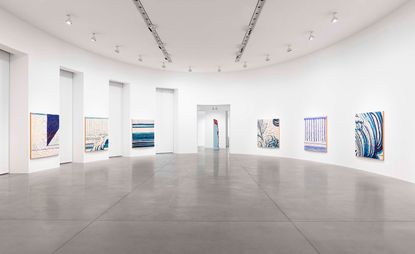
The azulejo – a kind of painted, tin-glazed ceramic tile – has a rich and diverse history. Since its invention on the Iberian Peninsula seven centuries ago, it has drawn influences from Moorish artisans, the Italian Renaissance, and imported wares from the Netherlands and China. The Portuguese, who consider it a national symbol, introduced it to the distant corners of their empire. It continues to be seen everywhere from magnificent public buildings to humble private abodes.
The dimensions of azulejos have varied with time, but none have been quite as ambitious as the ones by Adriana Varejão, currently on view at the Gagosian Gallery's Rome outpost. These blue and white tiles (or more accurately, tile paintings) measure 1.8 sq m each. With sweeping brush strokes and vivid cracks, they leave a strong impression even in the cavernous gallery.
Born in Rio de Janeiro – a one time capital of the Portuguese empire – Varejão has incorporated tile motifs in her work since 1988. For her, tiles are a means to explore kaleidoscopic identities. Her work is expressive, audacious and much loved. Bernardo Paz, perhaps the greatest art collector in the Southern Hemisphere, created a dedicated pavilion at Brazilian art museum Inhotim (see W*211) to house one of her installations. More recently, she was invited to drape over the aquatic centre for the Rio Summer Olympics with a tile-themed temporary mural.
Varejão produces her tiles by applying generous layers of plaster and oil paint onto canvas. As the paint dries, cracks appear on the surface by accident of nature. These are left unrepaired, perhaps as metaphors for the haphazard nature of cultural collisions. There’s a slightly savage, disquieting side to their beauty.

'Rome Meat Ruin' reveals a bloodied cross-section rendered in a vivid trompe-l'œil
The tile paintings now on view in Rome are the largest ones Varejão has produced to date. As she recalls, they were inspired by a dialogue between two columns at the Church of San Ignazio. Though these look exactly the same, one is made of marble and the other of wood, painted to resemble marble. Struck by the ‘play on artificiality and representation’, Varejão opted to work with baroque motifs, now found on each painting in the main hall.
‘I based each of these paintings on Portuguese baroque tiles, their images and their object quality,’ she explains. ‘I chose the motifs from my huge archive of tile images, focusing in general on those with more abstract and geometrical qualities.’ Indeed, with a close look and a good dash of imagination, one can see how each painting is a dramatically enlarged close-up of a cherub’s head, an architectural fragment, a rose or a shell.
The show also includes a single installation, Rome Meat Ruin, a tiled wall revealing a cross-section of swirling bloodied meat, which has been rendered in trompe-l'œil (a quintessentially baroque technique). ‘In my work, tiles are not tiles, meat is not meat. It is all about simulation and parody,’ remarks the artist.
Coinciding with the Gagosian show, Varejão has also been invited to present a multi-channel video installation, Transbarroco, at the French Academy in Rome. The piece was shot in the baroque churches of Brazil, backed by sound recordings of Afro-Brazilian drums and readings of key texts on Brazilian identity. It’s a powerful meditation on empire, appropriately on display at the heart of the greatest empire history has ever known.
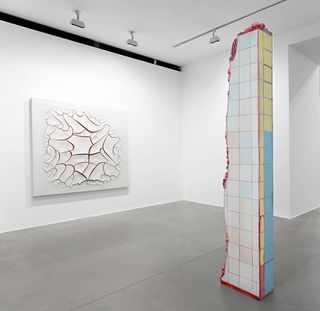
Varejão’s tiles are produced by applying generous layers of paint onto canvas. As the paint dries, cracks appear on the surface by accident of nature, and become part of the painting
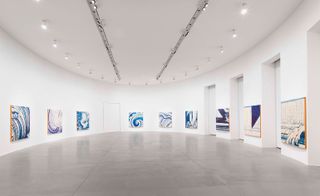
The artist based each of the paintings in the show on a Portuguese baroque tile, enlarging figurative details to the point that they are removed from their original meaning
INFORMATION
’Azulejão’ is on view until until 14 January 2017. For more information, visit the Gagosian Gallery website
ADDRESS
Via Francesco Crispi 16
00187 Rome
Wallpaper* Newsletter
Receive our daily digest of inspiration, escapism and design stories from around the world direct to your inbox
TF Chan is a former editor of Wallpaper* (2020-23), where he was responsible for the monthly print magazine, planning, commissioning, editing and writing long-lead content across all pillars. He also played a leading role in multi-channel editorial franchises, such as Wallpaper’s annual Design Awards, Guest Editor takeovers and Next Generation series. He aims to create world-class, visually-driven content while championing diversity, international representation and social impact. TF joined Wallpaper* as an intern in January 2013, and served as its commissioning editor from 2017-20, winning a 30 under 30 New Talent Award from the Professional Publishers’ Association. Born and raised in Hong Kong, he holds an undergraduate degree in history from Princeton University.
-
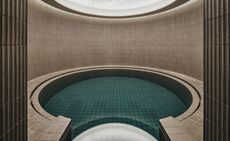 Find yourself at Six Senses Kyoto, the brand's breathtaking Japan debut
Find yourself at Six Senses Kyoto, the brand's breathtaking Japan debutSix Senses Kyoto opens its doors boasting tranquil, luxurious interiors by Blink Design Group
By Danielle Demetriou Published
-
 Shigeru Ban’s mini Paper Log House welcomed at The Glass House
Shigeru Ban’s mini Paper Log House welcomed at The Glass House'Shigeru Ban: The Paper Log House' is shown at The Glass House in New Canaan, USA as the house museum of American architect Philip Johnson plays host to the Japanese architect’s model temporary home concept
By Adrian Madlener Published
-
 Artist Mickalene Thomas wrestles with notions of Black beauty, female empowerment and love
Artist Mickalene Thomas wrestles with notions of Black beauty, female empowerment and love'Mickalene Thomas: All About Love’, a touring exhibition, considers Black female representation
By Hannah Silver Published
-
 Triennale Milano exhibition spotlights contemporary Italian art
Triennale Milano exhibition spotlights contemporary Italian artThe latest Triennale Milano exhibition, ‘Italian Painting Today’, is a showcase of artworks from the last three years
By Tianna Williams Published
-
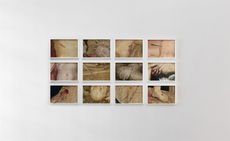 Walls, Windows and Blood: Catherine Opie in Naples
Walls, Windows and Blood: Catherine Opie in NaplesCatherine Opie's new exhibition ‘Walls, Windows and Blood’ is now on view at Thomas Dane Gallery, Naples
By Amah-Rose Abrams Published
-
 Richard Prince’s early photographs go on show at London’s Gagosian
Richard Prince’s early photographs go on show at London’s Gagosian‘Richard Prince: Early Photography, 1977–87’ opens at London's Gagosian, marking the beginning of Frieze London 2023
By Hannah Silver Published
-
 Sculptor Arnaldo Pomodoro transforms Fendi’s Rome HQ into a theatre of myth and magic
Sculptor Arnaldo Pomodoro transforms Fendi’s Rome HQ into a theatre of myth and magicFendi’s Roman HQ sets the scene for ‘Il Grande Teatro delle Civiltà’ a major show by Italian sculptor Arnaldo Pomodoro, who has also created a one-off edition of the house’s iconic Peekaboo bag. Read more in the July 2023 Issue of Wallpaper*, on newsstands 8 June
By Harriet Lloyd-Smith Published
-
 ‘Avedon 100’: cultural stars reflect on the photographer’s boundary-shattering legacy
‘Avedon 100’: cultural stars reflect on the photographer’s boundary-shattering legacyIn a new Gagosian exhibition, ‘Avedon 100’, marking the centenary of Richard Avedon’s birth, leading cultural figures – from Naomi Campbell to Spike Lee – share personal stories on the photographer’s remarkable career
By Sophie Gladstone Published
-
 Raffaele Salvoldi stacks hundreds of marble blocks for dazzling Milan installation
Raffaele Salvoldi stacks hundreds of marble blocks for dazzling Milan installationFor a Milan Design Week 2023 installation, Italian artist Raffaele Salvoldi teams up with marble brand Salvatori to create architectural sculptures comprising hundreds of marble blocks
By Harriet Lloyd-Smith Published
-
 Venice Biennale 2022 closing review: who, how and what on earth?
Venice Biennale 2022 closing review: who, how and what on earth?As the sun sets on the 59th Venice Art Biennale (until 27 November), we look back on an edition filled with resilience, female power and unsurprisingly, lots of surprises
By Harriet Lloyd-Smith Published
-
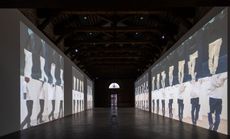 Bruce Nauman’s Venice mega-show is a full body experience
Bruce Nauman’s Venice mega-show is a full body experienceFocusing on the American artist's performative 'Contrapposto Studies', Bruce Nauman's show at Punta della Dogana, Venice, gives new meaning to body language – on view until 27 November 2022
By Laura May Todd Published